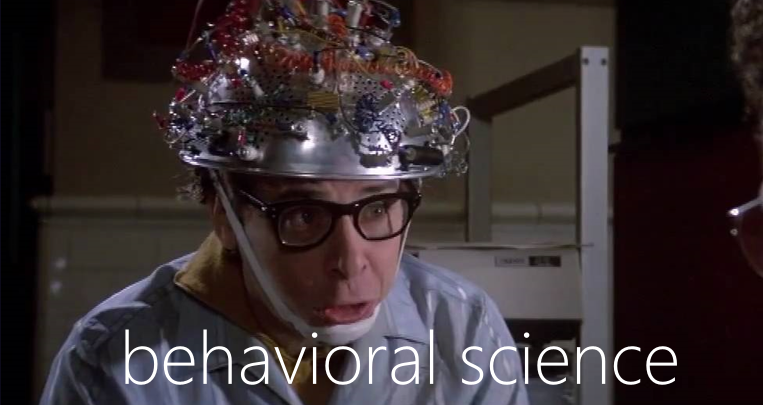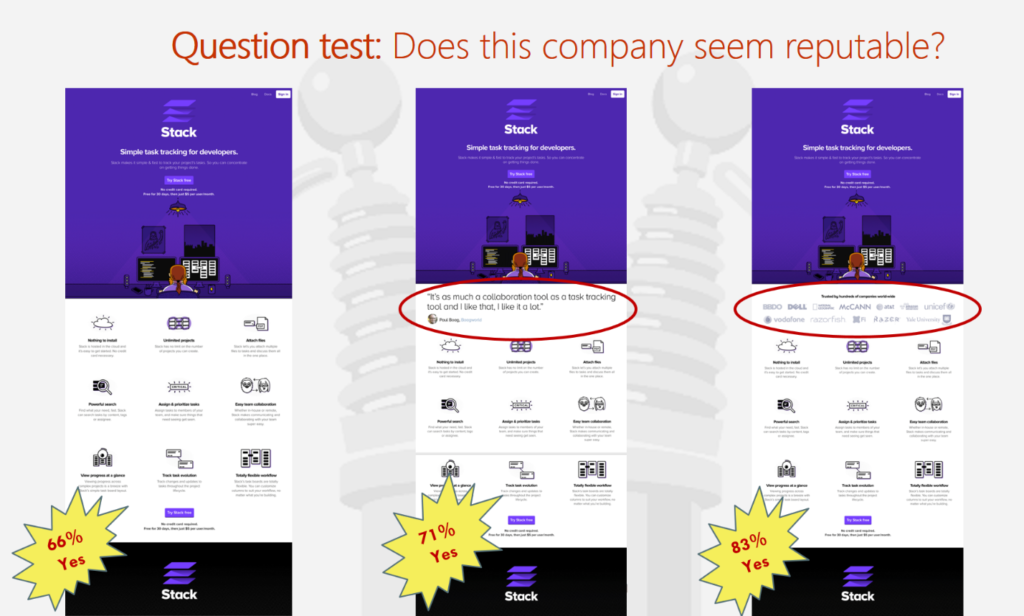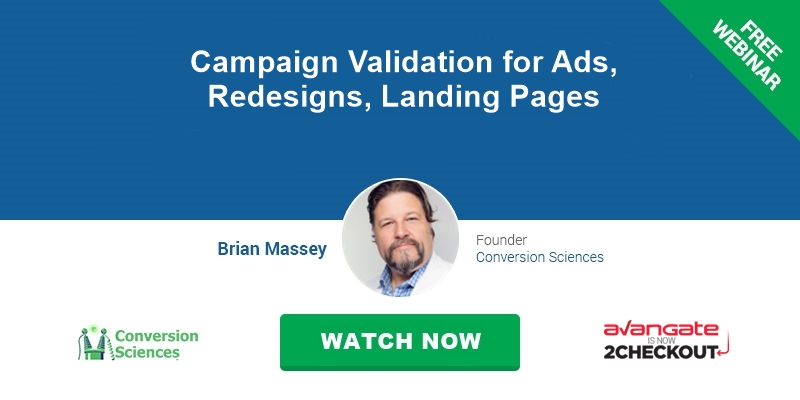The TV series Mad Men popularized Don Draper and his creative genius. Don took a few bits of data about a demographic and used them to develop brilliant taglines his clients loved. The only problem? He might have been able to do even more, if he’d had more data to work with.
Ultimately, Don was an artist, not a scientist. But to make the most of your campaigns, you need to awaken your inner scientist and start experimenting every step of the way. Otherwise, you’re not getting the most out of your campaigns—and leaving lots of money on the table.
My recent webinar with 2Checkout shows you how to use behavioral science to drive campaign validation for ads, redesigns and landing pages. Here’s a sneak peek at what the webinar has to say about taking your campaigns to the next level with data.
Behavioral Science Anticipates Actions
Behavioral science lets us use data about how people behave to make better decisions with campaigns. We have an intuitive understanding that a 4-star rating from 250 reviews may be better than a 5-star rating from 5 reviews, because the data — the star rating — is informed by the sample size. We know this intuitively. We are unconsciously calculating what statisticians call the “confidence interval” or the “margin of error”. And we also make a guess at the population size, the number of the products that were sold. But you don’t need to know those terms to choose the 4-star item with more reviews. I want you to apply your natural behavioral knowledge to drive your decisions about campaigns.

Moore’s Law Enables Abundant Data—It’s Up to Us to Use It
Much is made of Moore’s Law from an engineering perspective: the capability of our technology doubles every year or so (thanks to improvements in chip capacity). This has an impact on marketers. Basically, Moore’s Law lets us gather and process far more data—and when we have more data, we can make better decisions. Without the right information, it’s easy to invest a lot of time and effort into projects that don’t work.
For example, one large company actually reduced its conversion rate by 8 percent after an extensive redesign project. We suspect that company had done its research upfront, but never tested its designs along the way. By moving from a model where data is scarce and expensive to a model where data is abundant, we can make better decisions based on more data at every point of our campaign development. This lets us build better campaigns, launch them with confidence and continue to optimize along the way.

A Landing Page Has more than One Job
Landing pages have to do two things:
- Keep the promise made in the ad or email that led people there, and
- Make people take action.
This might seem simple, but there’s a lot that goes into it: a compelling offer (despite its popularity, “Submit” is not an offer), audience targeting, information collection, handling objections, building trust and much more. Testing all of these elements can help you uncover whether your landing pages are doing what they’re supposed to and what info—company validation, product details, a more compelling offer or something else—could improve them.
Design After the Message
It’s easy to get distracted by testing a variety of different designs. But that’s a distraction from getting the message right. Once you’ve nailed down the core message of the landing page or other asset, test different design implementations to ensure your design is working for you, not against you. After the design is in place, eye tracking tests can help identify if it’s directing attention appropriately.
What’s Wrong with A/B Testing?
A/B testing can give you good data, but it’s difficult to get right. It also doesn’t tell you why people preferred what they preferred, and only tests one thing at a time. Consider adding other approaches into your testing mix, like the 5-second test of instantaneous reactions, click tests (of where people would click on a page) and question tests (“Does this company seem reputable?”). These can give you more specific and actionable data about what to improve.

Test example source: UsabilityHub.com
What Kind of Scientist Will You Become?
If digital marketing is important to your business, you must awaken the scientist inside you. Scientists are incredibly creative people. They have to be. To complete his theories of relativity, Einstein had to imagine a person in an elevator, both falling on earth, and floating in space. How will you apply science to your brand of creativity?
Will you be a social scientist, focused on psychology? Will you be a growth scientist, driving the business toward your North Star metric? Will you be a persuasive scientist finding the right words to communicate your message? Will you be a design scientist, focusing on human interactions?
A little science will allow you to be more creative. It is a safety net that gives you freedom to experiment with bigger ideas, more effective experiences and powerful messages.
For more on channeling your inner scientist, as well as a list of testing tools that can help you put these principles into action, check out the full webinar.
This is a guest post by Brian Massey, who brings science to organizations of all sizes. He is the founder of Conversion Sciences that offers conversion optimization services. He awakens scientists through online and corporate trainings. Brian is the creator of the highly regarded Conversion Scientist blog, and is the author of the Amazon Marketing best-seller “Your Customer Creation Equation”.






